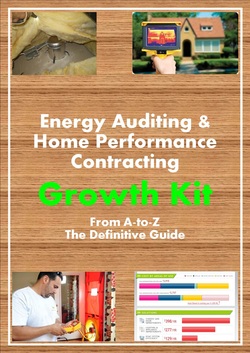Your Online HERS Rater Training Center
FREE HERS RATER PRACTICE EXAMPUT YOUR HOME PERFORMANCE BUSINESS ON ROCKET FUELENERGY AUDITOR NEWSLETTERGet the only Energy Auditor Marketing Newsletter with monthly strategies and tactics to grow your home performance business.
|
Building Science Fundamentals18. Natural / Mechanical Ventilation
Natural ventilation in homes occurs by air leakage from:
All the sources of air leaks energy auditors find and identify in homes is a source of natural ventilation for a homeowner, which is good. What is bad is that this leakage enters and leave uncontrollably and can be poor air quality. This is why we want to seal a home a tight as possible, the bring in mechanical ventilation where we know and control how much fresh, outside air is coming into a home. Build it tight, then ventilate it right. Mechanical ventilation can be in several different forms:
This ASHRAE Standard 62.2 references ventilation requirements and calculations for homes and is a BPI standard you will need to know for the BPI exam. Next Section
1b. Principals of energy, air & moisture
1c. Combustion science
|


